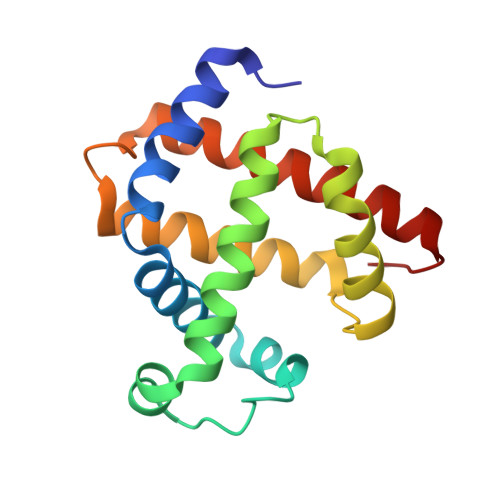Interactions of metronidazole and chloramphenicol with myoglobin: Crystal structure of a Mb-acetamide product.
Powell, S.M., Prather, K.Y., Nguyen, N., Thomas, L.M., Richter-Addo, G.B.(2023) J Porphyr Phthalocyanines 27: 1142-1147
- PubMed: 37868702
- DOI: https://doi.org/10.1142/s1088424623500700
- Primary Citation of Related Structures:
8FB0 - PubMed Abstract:
Nitroorganics present a general concern for a safe environment due to their health hazards. However, some nitroorganics such as metronidazole (Mtz) and chloramphenicol (CAM) also possess medicinal value. Mtz and CAM can undergo reductive bioactivation presumably via their nitroso derivatives. We show, using UV-vis spectroscopy, that sperm whale myoglobin (swMb) and its distal pocket mutants retaining H-bonding capacity react with Mtz in the presence of dithionite to generate products with spectra suggestive of the Fe-bound nitroso (Fe-RNO; λ max ~420 nm) forms. We have crystallized and solved the X-ray crystal structure of an H64Q swMb-acetamide compound to 1.76 Å resolution; formation of this compound results from the serendipitous crystallographic trapping, by the heme center, of acetamide from the reductive decomposition of Mtz. Only one of the swMb proteins, namely H64Q swMb with a relatively flexible Gln64 residue, reacted with CAM presumably due to the bulky nature of CAM that generally may restrict its access to the heme site.
- Price Family Foundation Institute of Structural Biology, Stephenson Life Sciences Research Center, and Department of Chemistry and Biochemistry, University of Oklahoma, 101 Stephenson Parkway, Norman, OK, U.S.A. 73019.
Organizational Affiliation:




















